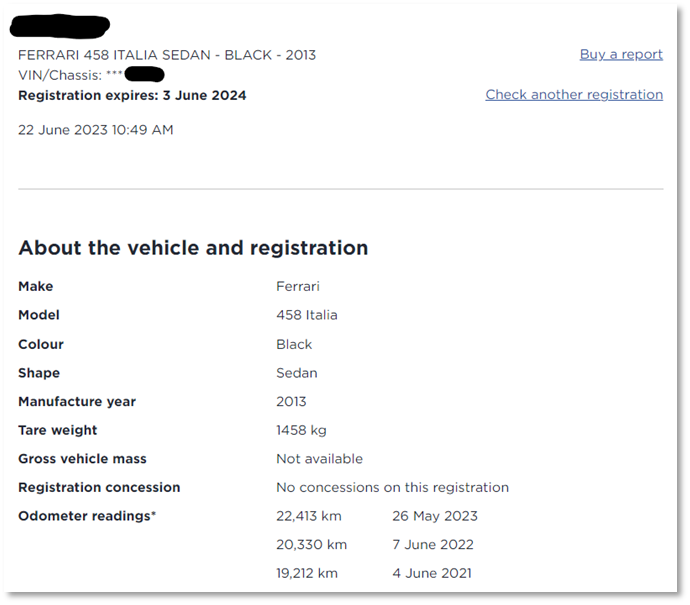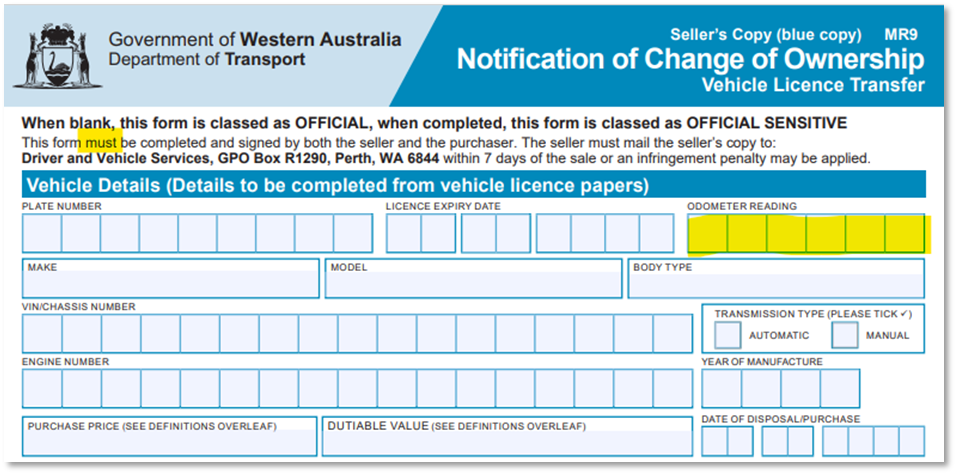



The good news: It’s been delivered! The MTA’s idea for the WA Department of Transport (DoT) to help consumers make better-informed buying decisions and eliminate fraud in the second-hand vehicle market has been implemented.
The bad news: Our proposal was delivered last week by the NSW government, while WA’s DoT says the improvement is not a priority for the State, scheduled instead for 2027.
The new free service for NSW consumers is exactly what the MTA proposed at both a state and federal level – a simple, clean and effective tool that gives buyers the information they need to make informed buying decisions.
For those buying vehicles from or in NSW, users are asked only to enter a NSW plate number and tick a box to accept the Terms and Conditions. The result provides details of the vehicle including make, model, year of manufacture, GVM and the last three odometer readings logged by government (see example screenshot below).

The case for WA
For a bit of background, the MTA formally wrote to DoT in August 2022 with a simple enough proposal:
Allow consumers to look up all historical odometer readings of a vehicle before they agree to buy it, so they can see if the current number on their odometer is lower (or lower than expected) than at the last reading.
The MTA argued that since this type of fraud is increasing AND the department already requires the current odometer reading on its vehicle transfer (see below) and other forms, it would be relatively easy to implement the MTA s recommendations, which would pro-actively empower buyers and prevent crime.
As NSW Minister for Roads John Graham said at their launch, “Buyers of cars, motorbikes and trucks can take some of the power back with this access to information that will allow them to more easily spot low mileage or other suspicious variations that may indicate tampering.”

We know WA does not yet have mandated annual inspections as part of its licensing regime, but as explained above, several official DoT forms have required an odometer reading to be provided for many years. As such, every vehicle that has been sold as ‘second-hand’ at least once, should have a number recorded by DoT. If the government hasn’t ever received a form for a particular vehicle, the search result can simply say so.
The DoT already has a free lookup facility displayed on the front page of its website (see below) that provides some details of a vehicle based on its plate number. Since the search facility is already there and the odometer readings have already been collected, it’s just a matter of adding the odometer field to the search results.

The MTA accepts that government “forms” have a long history of being paper-based and it takes significant resources to get information onto a computer. However, the existing “Check vehicle rego” service (above) demonstrates that the DoT has already completed data entry from forms, so if that process has excluded odometer readings, it begs the question, why does the DoT require the information in the first place?
Any suggestion that the MTA WA’s recommendations cannot be implemented in WA because of privacy issues can be dispelled by the fact that NSW has successfully delivered it.
On a final note, the MTA will always advocate positively and collaboratively with government whenever possible, with possible solutions in hand. While the excellent outcome in this case has not yet been delivered in WA, we congratulate the NSW government for listening to industry and continue to encourage WA departments to follow suit.